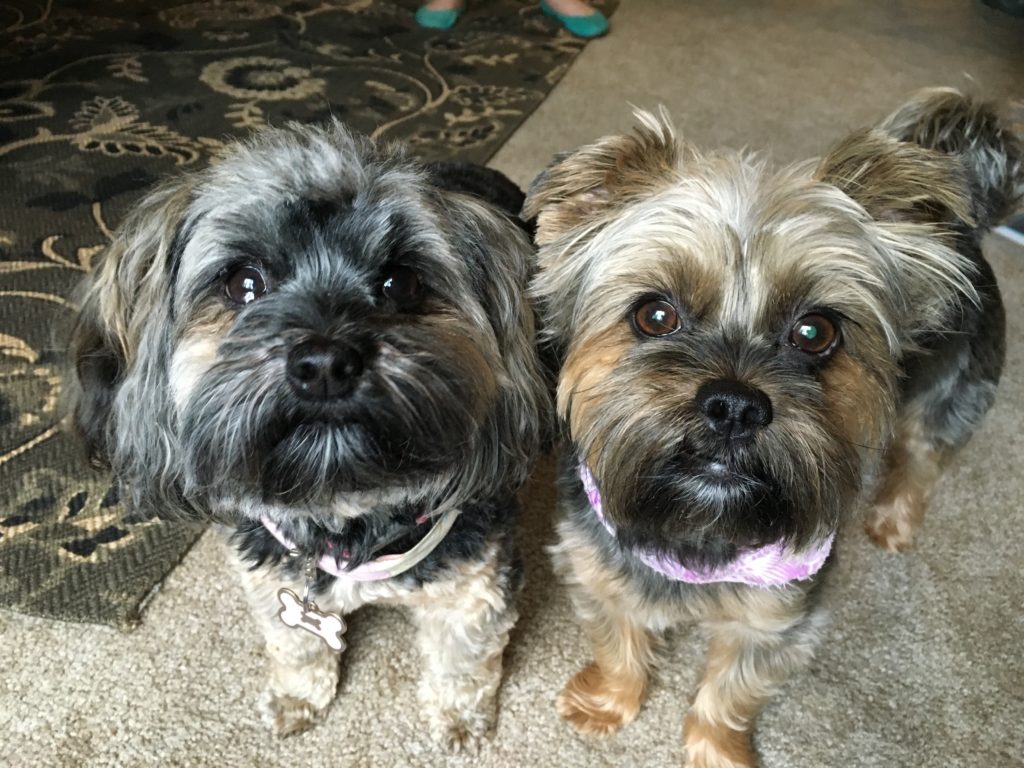Training a Pair of Yorkie / Shih Tzu Mixes to See Their Humans as the Top Dog
By: David Codr
Published Date: May 17, 2016
Opal is a three-year-old Yorkie / Shih Tzu mix who lives in Omaha with Bella, a five-year-old Yorkie / Shih Tzu mix. The dog’s guardian called me to put a stop to the fights that had started to break out amongst the pair after a failed attempt with a local “trainer;” Dillon’s Dog Training.
Both dogs barked excitedly and jumped up on me repeatedly when I arrived for the session. This was mitigated a little bit by the fact that the guardians had the dogs on a leash which they dragged around with them.
I had a pretty good idea as to why these dogs were acting the way they were, but it wasn’t until I sat down at the kitchen table with her guardians before my suspicions were confirmed, LOL.
Establishing boundaries, rules and limits will go a long ways towards helping these dogs start to identify as being in a follower position. As you can see in the above video, the dogs had absolutely no concept of boundaries or limits prior to our session.
I am very pleased that the dog’s guardians instantly recognized the techniques introduced by Dillon’s dog training were inappropriate. I have worked with a couple of dozen clients who contacted Dillon’s Dog Training before contacting me and in every situation the session with Dillon’s made matters worse.
Unfortunately this “trainer,” and I use that term loosely, uses something called dominance theory. What this theory involves is punishing or correcting the dog harshly until the dog stumbles across the action or behavior that you want. Once that is the case then, they tell you to praise the dog.
Dominance theory is the way that people trained dogs for a long long time. However about 15 years ago positive reinforcement became the preferred way of training and conditioning dogs. Using dominance theory as your dog behavior training method is almost always going to backfire or result in other unwanted actions or behaviors.
These are dog training methods that have been abandoned by every reputable trailer and behaviorist for years which makes it infuriating to me to see someone who calls himself a professional continuing to use dominance theory.
Fortunately for Bella and Opal, their guardians recognized that the person they hired was garbage and immediately disregarded using his harsh and arcane techniques.
By simply incorporating rules and boundaries and practicing the petting with a purpose strategy, Bella and Opal’s guardians will quickly train their dogs to engage in the actions and behaviors that they want.
Next we engaged in a little dog obedience training. The dog’s guardians had mentioned that the dogs only responded to a “come” command when they felt inclined to do so. This is most likely a result of the dog’s considering themselves to be peers with the humans they lived with. What a dog considers you it’s peer, the listening to you becomes optional.
To help Bella and Opal start to respond better, I engaged in a simple dog training exercise called the Recall.
I suggested that the guardians practice this exercise a few times a day for the next week or two. If they consistently use the hand placement and motion that I taught them, they will be able to get both dogs to recall instantly, even when they don’t have a treat.
Now that we had Incorporated rules and structure, I was ready to take this dog school to a whole different level. I had one of the guardian’s relatives step outside so that she could play the part of a guest knocking at the door.
It was pretty easy to get the dogs to move away from the door and once we had incorporated a boundary and some distance, both dog’s behaviors improved immediately.
Security for the pack is typically handled by a authority figure, so relieving Bella and Opal all of this job responsibility will go a long ways towards helping them build up a healthy respect for their humans as authority figures.
A few minutes later I had the relative step back outside so that we could practice this exercise again. But this time we had the dogs guardian handle answering the door herself.
I always love it when dogs pick up something so quickly. I suggested that the guardians call or text one another when they are on their way home so that they can practice this exercise amongst themselves. It shouldn’t take more than a half to a dozen practice repetitions before the dogs learn to stay back behind the boundary on their own whenever they hear the doorbell.
By the end of the session, Opal and Bella were already starting to follow some of the new rules, responding much quicker to their guardian’s commands and corrections and seemed much more balanced and centered.
Bella and Opal are not aggressive dogs. They simply were confused as to what their position was in the home. Now that the guardians know how to effectively communicate and lead them, the dogs should start to identify as being in a follower position right away.
Once the dogs have gotten used to being in this follower position, they will look to their humans to handle situations rather than trying to correct the other dog themselves.
Categorized in: Dog Behavior


